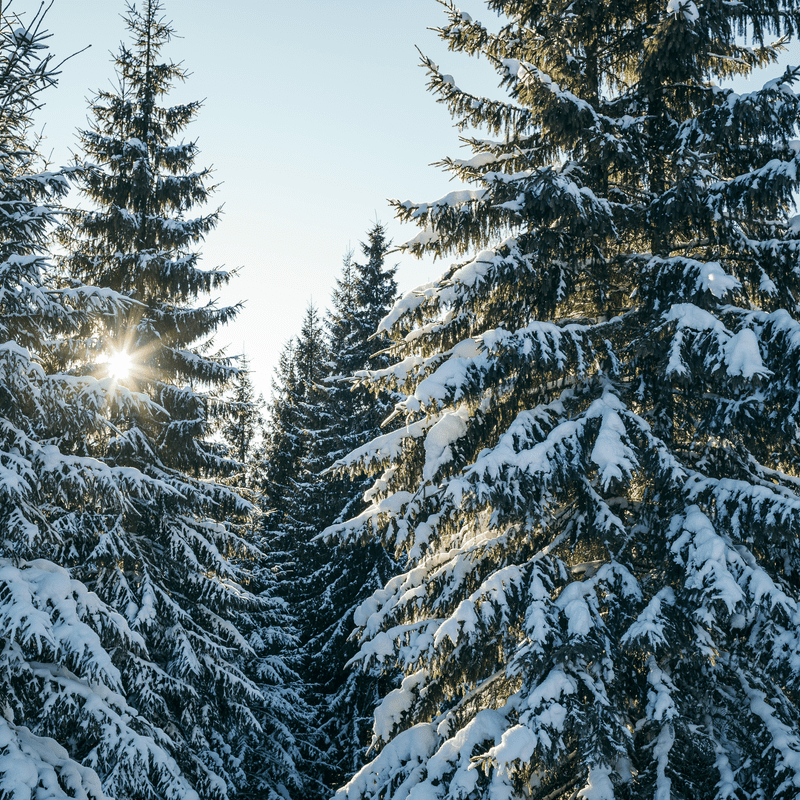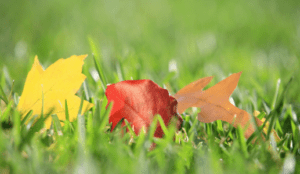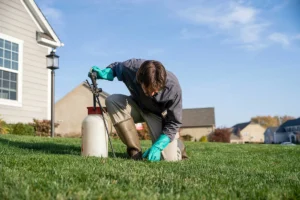While evergreen trees are naturally suited for Michigan winters, even they need help sometimes. Extreme temperatures can cause a phenomenon known as “winter kill,” which damages or even kills evergreens. There are things you can do to protect your beautiful trees. Today, we’ll show you how to protect your trees so your family can enjoy them for years to come.
Evergreens in Winter
Evergreens didn’t get that name by accident. Unlike their deciduous tree friends, evergreens are conifers, which means they hold onto their needles all year round. Technically, needles are leaves, and they do fall out as they get old and die; they don’t drop all at once as many trees do in autumn. Because evergreens never go completely dormant, this makes them vulnerable to winter kill, also known as “winter burn.” Needles naturally produce a waxy coating that helps conserve moisture and even prevent UV light damage. There’s also evidence suggesting this waxy coating can shield conifers from pollutants in the air. In summary, this waxy coating is a very impressive adaptation and is a big factor in helping evergreens stay strong all winter long. However, like all things in life, nothing is guaranteed. If the surrounding soil is too dry or the winter experiences extreme dips in temperature, your evergreens may need help to ward off winter kill.
Winter Kill
Winter kill is caused by a severe loss of water in plants during the winter season. As the tree is actively growing during the warm months, water is absorbed through the roots and pumped throughout the tree. However, because evergreens don’t lose their needles, and therefore do not go dormant, their root system continues to seek out water when other trees are essentially hibernating for the winter. When the soil freezes, the root system can’t supply the correct amount of water, and consequently, winter burn sets in. Signs of winter kill on evergreens include brown spots and dead or dying limbs.
Winter Tree Care
The best way to encourage evergreen wellness is to keep your trees well-watered during the growing season. It’s also advisable to apply a layer of mulch around the tree. This helps the soil surrounding the tree retain moisture and increase the moisture levels going into the winter season. If you didn’t have a chance to put down mulch this year, don’t fret. There’s still time to apply a protection spray, which mimics the needles’ natural waxy coating. You can also use burlap to wrap your trees and protect them from winter winds. When spring arrives, if you notice winter burn damage, look for signs of new growth and buds. If buds are present, your tree should be okay. Prune the dead branches, mulch, fertilize, and water to help your tree recover.
Protect Your Evergreens from Michigan Winter Weather – Call Top Lawn
Evergreens are tough, but sometimes they need a little help. Top Lawn’s Evergreen Protection Spray is a safe, effective means to ensure your beloved trees make it safely through the cold season. Call (248) 956-6022 or contact us online to schedule an appointment today! For more tips on lawn care, trees, and pest control, be sure to check out our blog and like us on Facebook, Twitter, Pinterest, Instagram, or Houzz.





